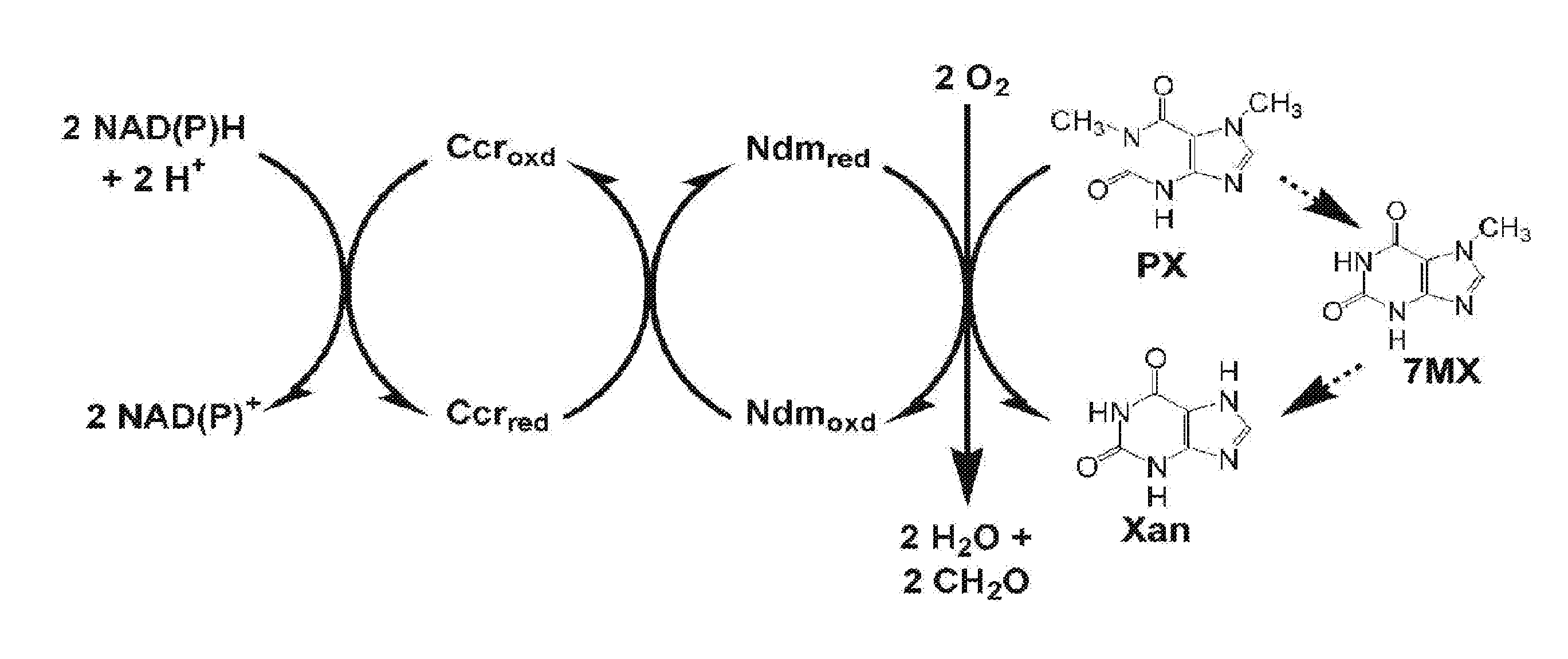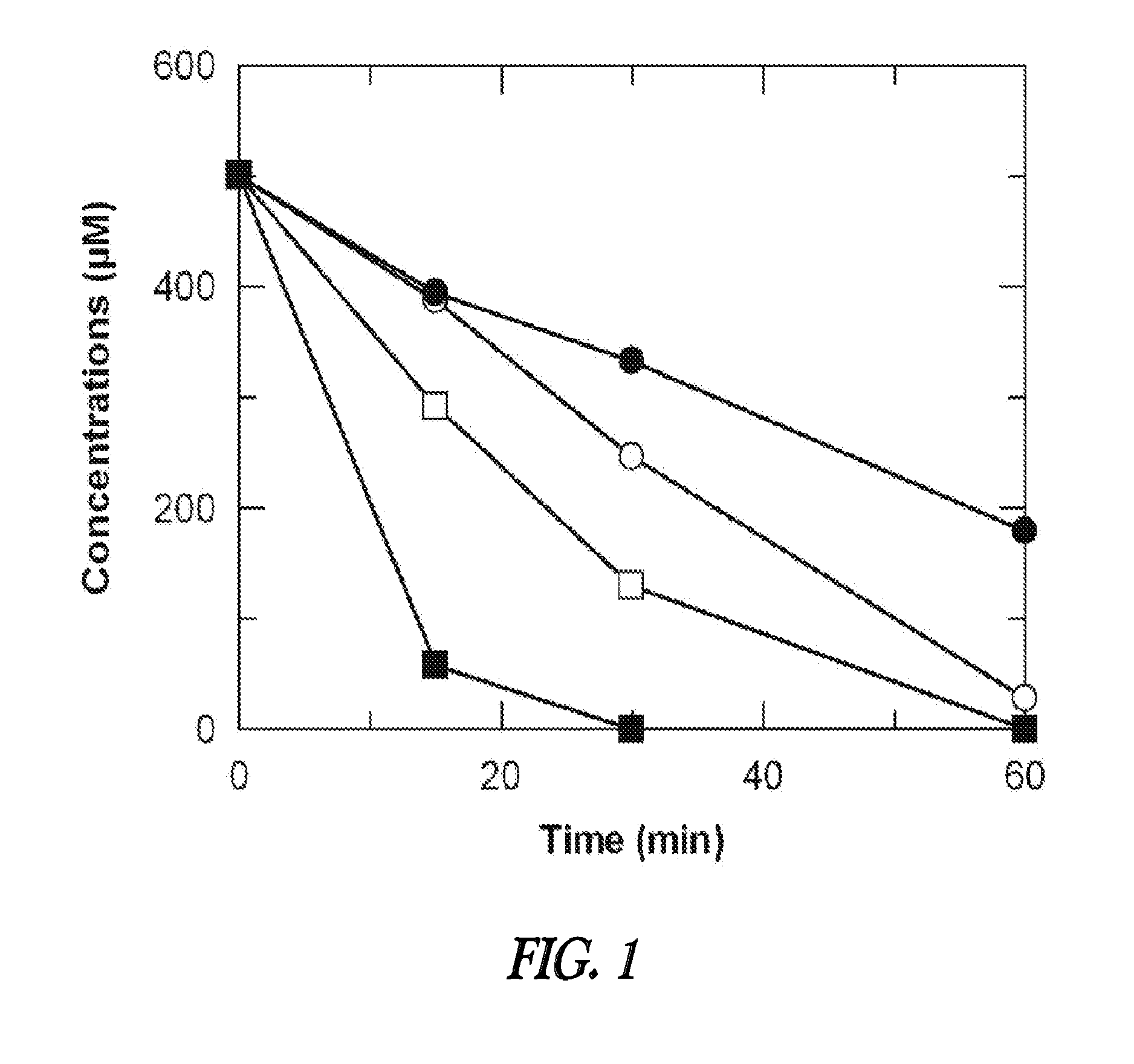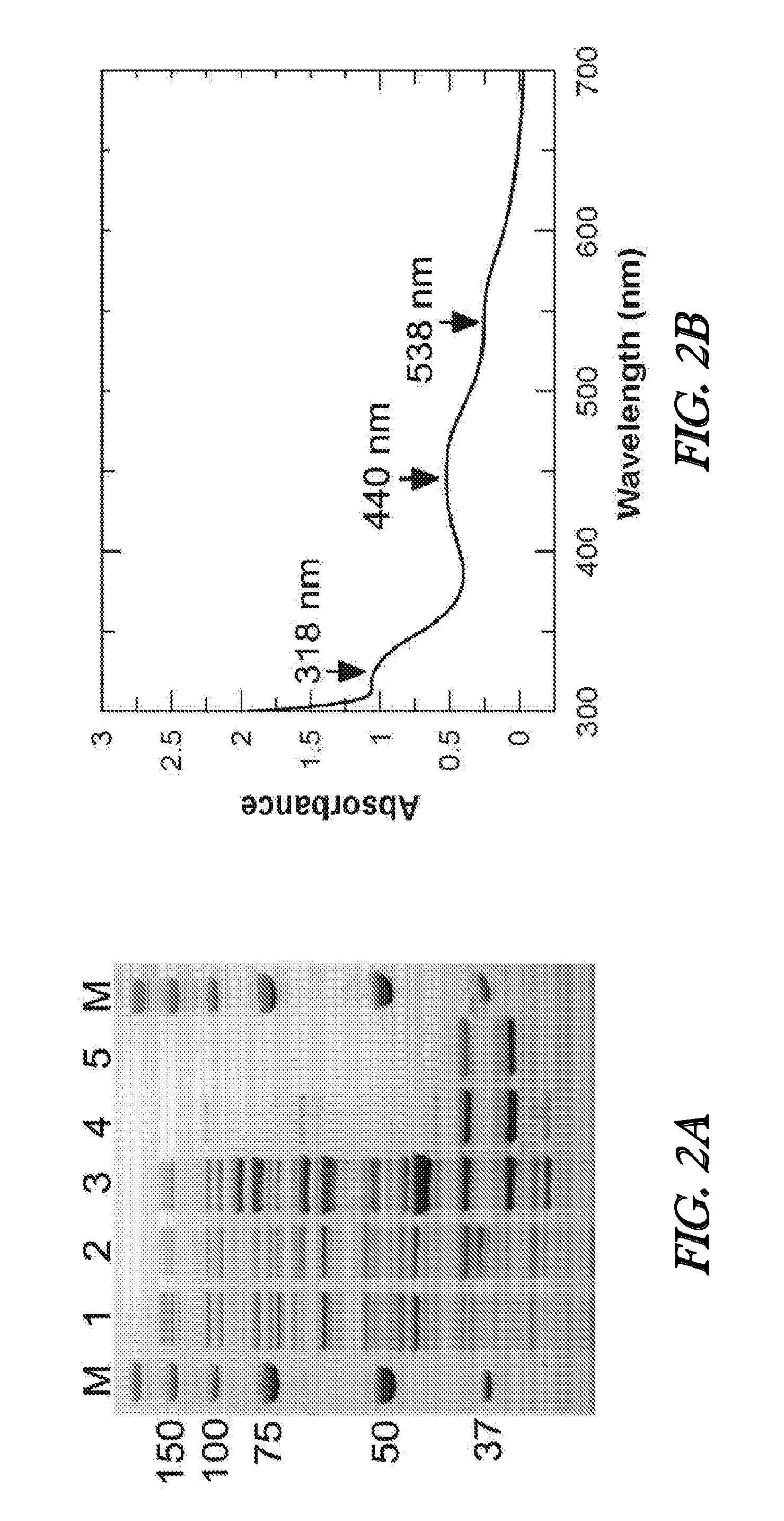N-demethyase genes and uses thereof
a technology of ndemethyase and genes, applied in the field of ndemethyase genes, can solve the problems of multi-step and expensive process, and achieve the effect of high valu
- Summary
- Abstract
- Description
- Claims
- Application Information
AI Technical Summary
Benefits of technology
Problems solved by technology
Method used
Image
Examples
example 1
Decaffeination of Coffee and Black Tea Extracts by Pseudomonas putida CBB5
[0084]In a study to demonstrate the utility of Pseudomonas putida CBB5 and Pseudomonas sp CBB1 in caffeine remediation process, the effect of caffeine-grown cells on coffee and black tea extract was examined. Pseudomonas putida CBB5 was grown in M9 mineral salts medium containing 2.5 g·l−1 caffeine and 4 g·l−1 soytone, at 30° C. with shaking at 200 rpm. Cell density was monitored by measuring the optical density at 600 nm (OD600). Upon reaching an OD600 of 2.0 to 2.5, cells were harvested by centrifugation (10,000×g for 10 minutes at 4° C.) and washed twice in 50 mM potassium phosphate (KPi) buffer (pH 7.5). The cells were then suspended in 5 ml of KPi buffer at a final OD600 of 4, 20 and 40. Coffee extract was made by boiling 100 g of commercially available coffee powder in water at 100° C. for 15 minutes. The extract was then filtered and amount of caffeine concentration was analyzed as described in Yu et al...
example 2
[0094]Caffeine (1,3,7-trimethylxanthine), theophylline (1,3-dimethylxanthine), and related methylxanthines are naturally occurring purine alkaloids that are present in many plant species. As a major human dietary component, caffeine can be found in common food and beverage products such as coffee, tea, colas, and chocolates. Caffeine has been used in pharmaceutical preparations as a neurological, cardiac, and respiratory stimulant. It is also used as an analgesic enhancer in cold, cough, and headache medicines (Daly, 2007). Other pharmaceutical applications of methylxanthines include use as a diuretic, bronchodilator, relief of bronchial spasms, and control of asthma (Daly, 2007). 1-Methylxanthine, 1-methyluric acid, and uric acid have also been studied for their antioxidant properties (Lee, 2000). Because of their wide use in food and pharmaceutical industries, caffeine and related methylxanthines enter the environment via liquid effluents, solid wastes from processing facilities, ...
example 3
[0146]More than 19,091 natural products and xenobiotics out of approximately 500,000 entries in the Combined Chemical Dictionary database (http: / / ccd.chemnetbase.com), contain N-methyl groups. N-demethylations of many of these compounds, catalyzed by members of several enzyme families, are critical biological processes in living organisms. For example, humans use cytochrome P450s to N-demethylate a multitude of drugs and xenobiotic compounds (Hollenberg, 1992). N-Demethylation of methylated lysine and arginine residues in histones, important for regulating chromatin dynamics and gene transcription, are mediated by flavin-dependent amine oxidase LSD1(Shi et al., 2004), and JmjC-domain-containing enzymes that belong to the 2-ketoglutarate-dependent non-heme iron oxygenase (KDO) family (Tsukada et al., 2006). The bacterial enzyme AIkB and its human homologs ABH2 and ABH3 (Aas et al., 2003) are also KDOs which catalyze N-demethylation of methylated purine and pyrimidine bases to repair ...
PUM
| Property | Measurement | Unit |
|---|---|---|
| Fraction | aaaaa | aaaaa |
| Fraction | aaaaa | aaaaa |
| Acidity | aaaaa | aaaaa |
Abstract
Description
Claims
Application Information
 Login to View More
Login to View More - R&D
- Intellectual Property
- Life Sciences
- Materials
- Tech Scout
- Unparalleled Data Quality
- Higher Quality Content
- 60% Fewer Hallucinations
Browse by: Latest US Patents, China's latest patents, Technical Efficacy Thesaurus, Application Domain, Technology Topic, Popular Technical Reports.
© 2025 PatSnap. All rights reserved.Legal|Privacy policy|Modern Slavery Act Transparency Statement|Sitemap|About US| Contact US: help@patsnap.com



